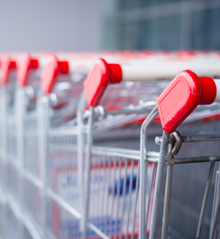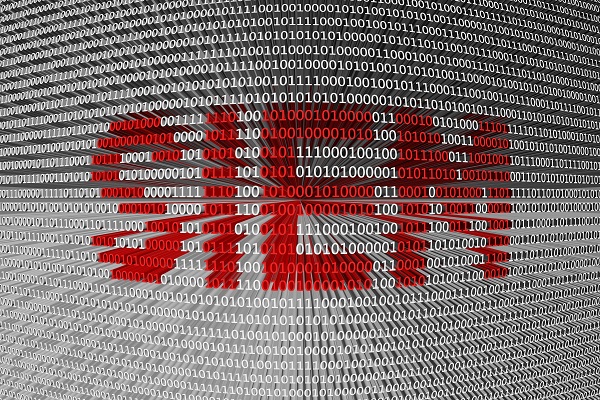The retail industry is undergoing a metamorphosis, courtesy technological changes and adoptions. In this cut-throat market scenario, where online stores are slowly taking over, brick & mortar stores are also forced to adopt big data analytics to help achieve operational efficiencies, woo customers and increase bottom-line. Traditional retailers are now rapidly adopting relevant technologies to ensure they are on par with their online counterparts as far as customer reach, customer satisfaction and shopping experiences are concerned. Thankfully, retail analytics is helping offline stores fight their online counterparts, and together these two retail formats, with the help of technology are fast seeing considerable changes as far as retail is concerned.
Let’s observe where retail analytics is heading and how it is helping the retail sector as a whole:
Retail embracing IoT technology
‘’Number of connected devices in retail is slated to increase’’
IoT is going big, as various industries are adopting the technology in the name of greater efficiencies and better performance. Manufacturing and Utilities are two sectors leading the IoT revolution with as many as 600+ million devices deployed between them (as of 2015), as per a report by Gartner. Retail sector, however, is fast on the heels of aforementioned sectors as the number of devices deployed in retail increases by the day.
More and more IoT devices are being deployed in operations and customer-facing areas as retailers are looking to increase efficiency in operations and move a few notches up in terms of customer service. More devices mean more data being generated, as data volumes sky rocket there is an immediate need for segregating and analyzing this data to help retailers understand and institute smarter initiatives in retail operations. A report by Juniper research states that, by 2020 retailers are set to spend about $20 billion on IoT devices signalling what we can term as – the increased dependence on connected devices for enhanced business objectives.

Location Analytics get more emphasis
‘’Sensor driven approach to gather valuable customer data’’
Location analytics is getting more emphasized in the current scenario. Physical stores have found a great help in location analytics which is helping these stores assess customer behavior patterns and convert these inputs into actionable objectives. Some of the retailers have planted sensors in various sections of their stores to study, analyze customer movement patterns and observe what factors prompt a customer to move to a section and what prompts her to purchase a product finally.
Location analytics is helping retail stores in various aspects of store operations from designing a shelf, to promoting products to cutting down on waiting times at billing counters. Location analytics is also helping create a fantastic in-shop experience; while customers gain through a far more satisfactory shopping experience, retailers gain through better customer relationships and higher sales.
Rise of Cross-platforms analytics
‘’Tracking data across multiple channels has become essential’’
The modern day customers (more so gen X and Y) are tech savvy and hop across a multitude of channels before zeroing in on a purchase. Customers with heightened awareness now browse through social media, blogs, expert articles before deciding on a purchase. Tracking customers’ digital foot print is getting difficult as each channel is independent of the other and data is gathered only in silos. But this has changed recently, with retail analytics expanding into cross platform or multi-channel analytics retail stores (both offline and online) are able to get a fair assessment of customer behavior patterns. Store owners now have access to data that can be shared with sales and operational teams who can target customers in a more effective manner and entice them to make a purchase.
This also facilitates an Omni-channel purchase for customers while ensuring the store owners do not lose customers who visit either the physical or online stores.
Creating Supply Chain Efficiency
‘’ Managing inventory and delivery leads to efficient operations and customer satisfaction’’
Analytics is widely being used to create a seamless and more efficient supply chain management system. Retail stores are using analytics for a range of tasks from procurement of goods to inventory management to delivery. Inventory management is a vital task for both traditional and online retail stores, as inventory is directly proportional to costs incurred. Retail analytics is helping stores maintain a near perfect inventory as they track product availability and product demand.
Another major aspect is that of delivery, especially in the case of online retail. Delivery of the right product at the right time means good customer service and earning credibility in the market. Analytics help track location wise product demand and help maintain good inventory thereby ensuring a more efficient delivery process.
Mobility is gaining traction
‘’ Mobile purchases are increasing by the day’’
The number of mobile users (Smartphone) has been showing a consistent upward trend over the last few years. Subsequently, online shopping has seen an exponential increase over the last 2-3 years. As per a Statista report, the number of smartphone users in the USA is poised to be at 224.3 million by end of 2017; a growth of 55% over the 2013 figure of 144.5 million users.
Increasing number of digital natives, better internet infrastructure, increasing smartphone penetration are some of the reasons for this exponential growth. As customers get short on time and await a shorter purchase cycle, retailers are sparing no efforts to ensure a strong mobile analytics in place.
Mobility is the in-thing as mobile phones are now multi-purpose devices and shopping being a major purpose. Mobile analytics help retailers understand customer purchase patterns, purchase history, preferred brands, etc. This helps retailers anticipate future needs of customers and design the shopping experience in such a way that customers find it convenient to shop and thereby save a lot on time in their next purchases. This sort of experience leads to higher levels of customer satisfaction and better customer relationships.
Conclusion
Retail analytics is being embraced by both online and offline stores and has ever since been a boon for retailers. While online companies benefit in terms of being able to provide a great online shopping experience, offline stores are using analytics to place, promote, and push products based on customer preferences and needs. Understanding customers and providing them with a great shopping experience has never been so easy, all thanks to retail analytics!

Sr. Manager, Marketing, Digital Services at Happiest Minds. With 10+ years of experience in marketing, she likes to seek challenging position that needs innovation, creativity and dedication. Her areas of expertise lie in Digital Marketing, Marketing Communication and strategy, Content Marketing, Sales Enablement, Lead Generation and Vendor Management. In her free time, Pragya likes to paint, write and travel.






